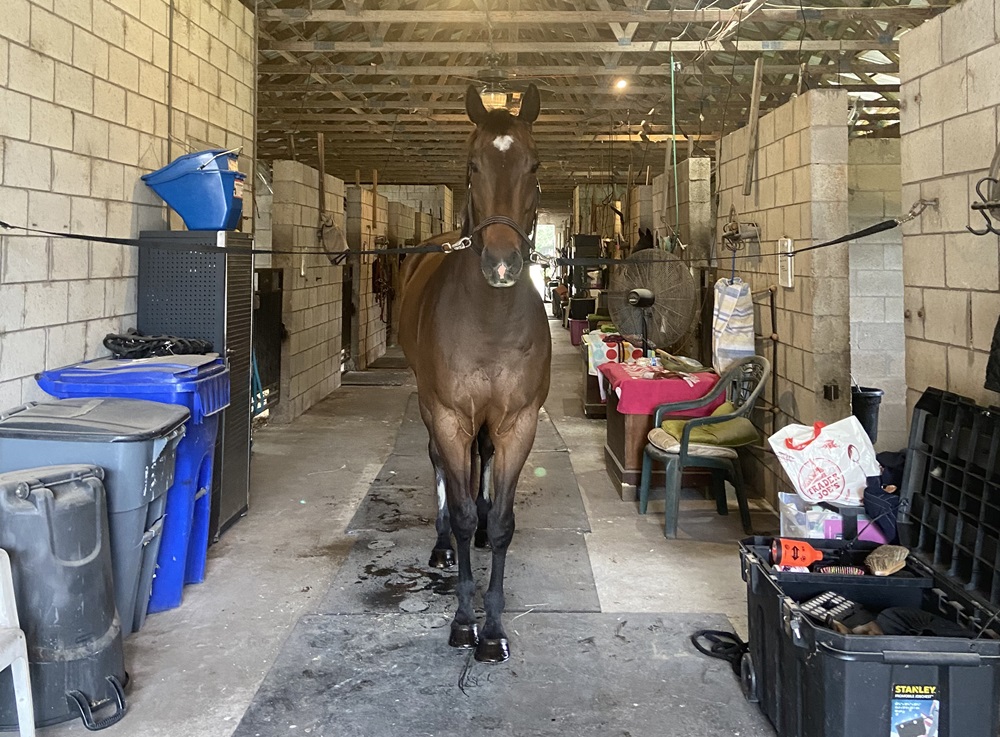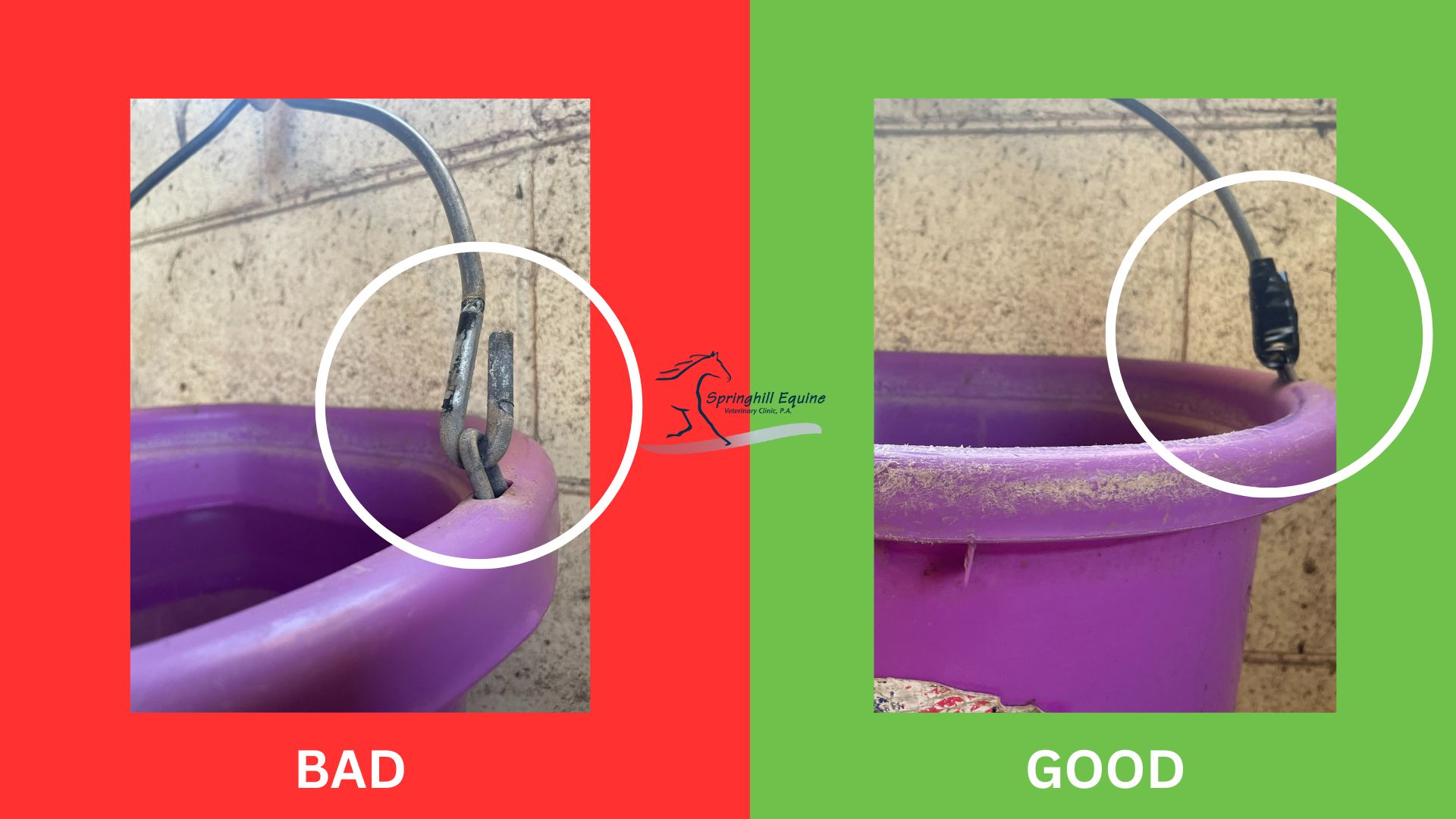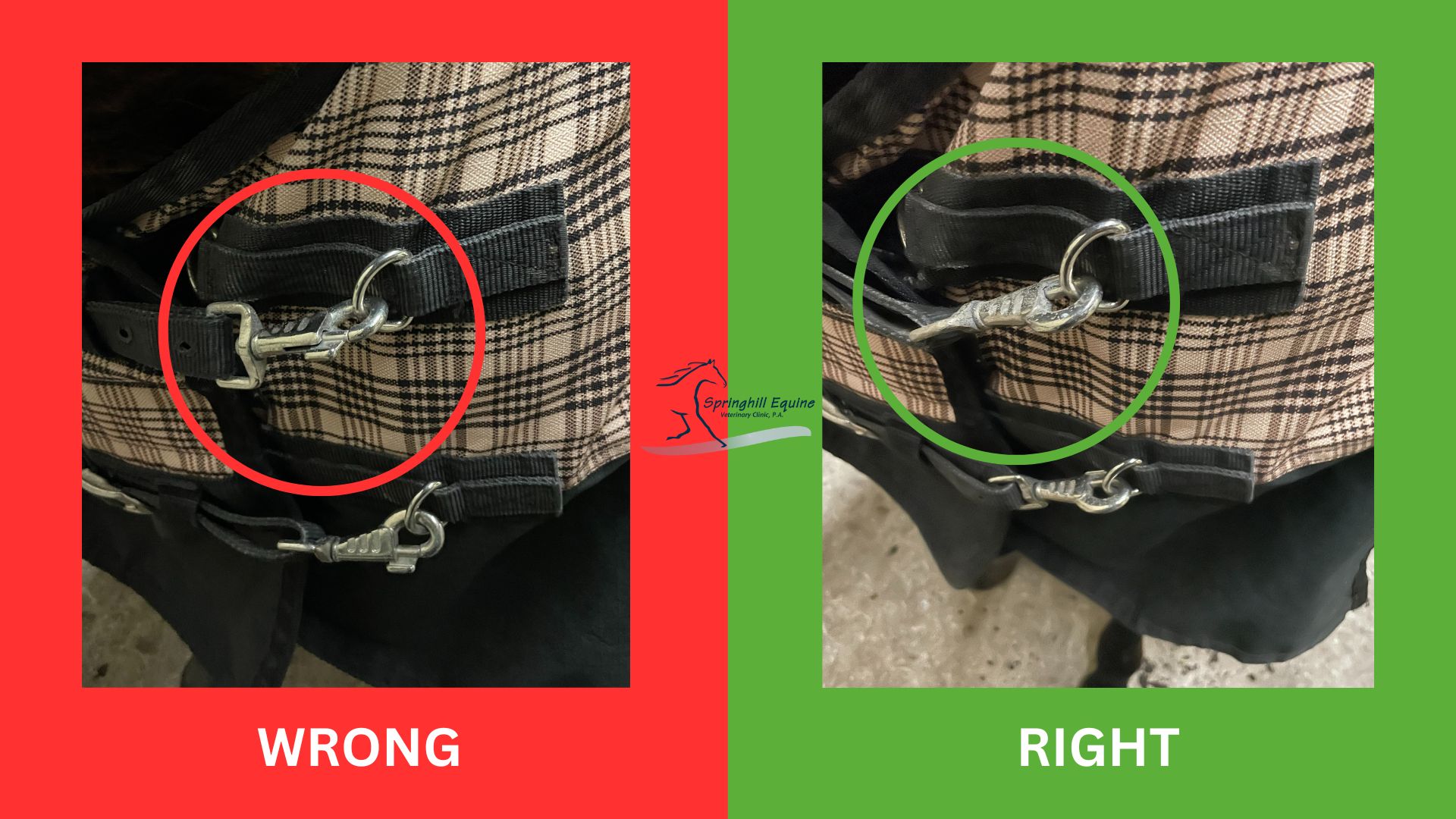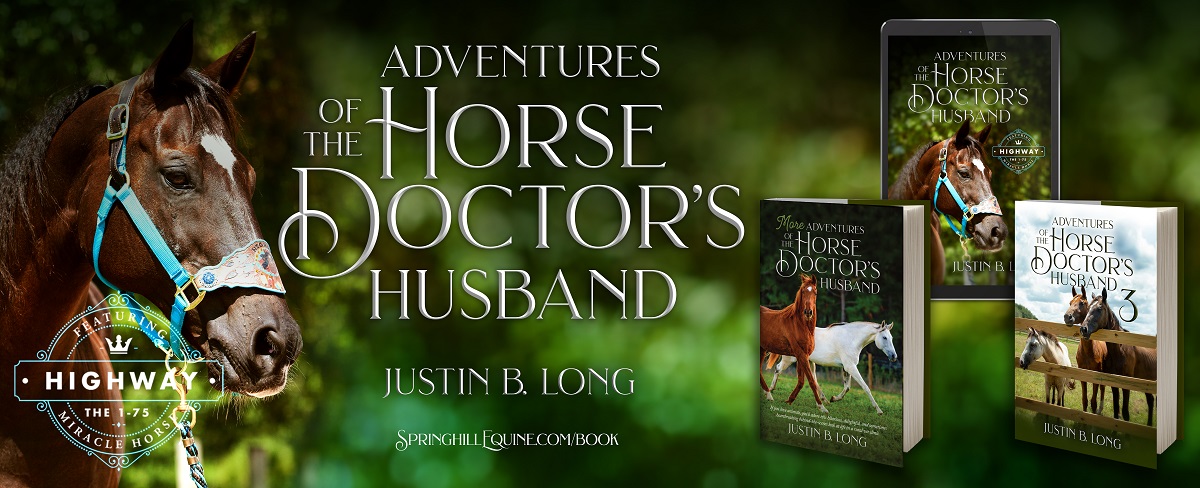Whinny’s Wisdoms

Hey everybody, it’s your ever-observant barn mouse Whinny here! We all know how accident-prone horses can be (unlike cats and mice, which Tony used to assure me are far superior species in that regard). Therefore, it’s important to be on the lookout for potential hazards that may lurk within and around the barn. Let’s take a look at the top 10 common hazards in most barns, and find some ways to create a safer environment for your horse.
- Non-Breakaway Halters
Non-breakaway halters, often made of nylon, might seem sturdy, but they pose a significant risk if your horses get caught in a situation which can cause them to get stuck in the halter, leading to injuries or worse. Opt for breakaway halters that release under pressure, ensuring your horse’s safety in unforeseen circumstances. Most of the time the breakaway piece is an area of the halter that is leather that easily breaks under excess pressure. This is especially critical when hauling in a trailer.
- Cobwebs
Cobwebs may add a spooky charm to a barn, but they can compromise your horse’s respiratory health, as well as pose a fire hazard. Regularly check and clean your barn to prevent the buildup of cobwebs to lower your risk.

- Clutter
A cluttered barn is a hazard zone waiting to happen. Aisleways with pitchforks, shovels and equipment can become dangerous, especially if a horse spooks and hits, kicks or becomes tangled amongst it. Take the time to organize and declutter the barn space, creating a safer and more efficient environment for everyone.
- Too Many Extension Cords
Electrical mishaps are a real concern in barns with excessive extension cords. Invest in proper wiring and limit the use of extension cords. This simple step can significantly reduce the risk of electrical fire hazards in the barn.
- Water Bucket Clips
Double-ended snaps and where the handle hooks to the water bucket are a common cause of eyelid lacerations. Horses love to rub and itch on these buckets and accidentally get caught and pull back and hurt themself in the process. Any easy fix to this problem is to make sure all double-ended snaps are facing the wall and wrapping bucket hooks with electrical tape.

- Feed Storage
Proper horse feed storage is important for maintaining the nutritional quality and safety of your horse’s diet. Storing feed in a cool, dry place is essential to prevent mold growth and the development of mycotoxins, which can be harmful to horses. Store feed in clean containers with well-sealed lids to prevent rodent and insect contamination. Additionally, storing feed off the ground and away from direct sunlight helps preserve its nutritional value.
- Fencing (Barbed wire and Lack of Top Boards)
Barbed wire is not easily seen by horses and poses a severe threat to their safety. The sharp, pointed edges can cause significant injuries, from cuts and scrapes to massive lacerations. Similarly, wire fencing without a top board can let a horse accidentally run into or get caught up in the fencing. It’s crucial to utilize alternatives like smooth, visible fencing options that prioritize both containment and the well-being of our equine companions. Electricity is always a good accessory to quality fencing!
- Nails in Boards
Regularly inspecting fencing and stalls for loose nails is a paramount aspect of equine care, crucial for preventing potential lacerations and injuries. This simple yet essential practice not only safeguards the physical well-being of our equine companions but also contributes to fostering a secure and comfortable environment within the barn where your horse feels safe, rather than stressed about being around things that hurt.
- Blanket Clips
Although we are lucky here in Florida and only need blankets occasionally, we need to be mindful when clipping blankets that they are clipped towards the horse. As we have mentioned previously, as wonderful as horses are, they are accident-prone and can get themselves in precarious situations unless we are vigilant. Occasionally when clips are outward, they will snap closed on other objects, like haynets, bucket handles or stall doors. This is followed by a moment of panic, which often has an injury on its heels. Why can’t horses be more like mice?

- Pest Control
Pests such as flies, rodents, and insects not only irritate horses but can also pose health risks and compromise the cleanliness of the environment. Implementing a comprehensive pest control program involves regular cleaning of manure, proper waste disposal, and the use of insecticides or traps strategically placed to target specific pests. Be mindful that some physical and edible traps can pose risks to cats and dogs on the property. This is going to sound weird coming from a barn mouse, but bear with me: An environmentally friendly rodent eliminator and deterrent are spayed and neutered cats! Cats are natural predators, particularly adept at controlling rodent populations that might otherwise pose a threat to the barn’s hygiene and the well-being of horses. By spaying and neutering the cats, their focus remains on pest control rather than breeding, fostering a stable and efficient population.
Creating a safe environment in your barn requires diligence and attention to detail. By addressing these top 10 hazards, you’re not only safeguarding your horse but also fostering a space where everyone can thrive. Regular maintenance and proactive measures are the keys to ensuring a secure and happy haven for you and your horses.
Until next week!
~Whinny
P.S. Have you subscribed to my blog? You can do that by scrolling down to the big purple box just below and entering your email address. I’ll email you my blog every week, and then you won’t miss an episode! It’s that easy!
 Whinny’s Wisdoms is the official blog of Whinny the Clinic Mouse at Springhill Equine Veterinary Clinic in Newberry, Florida. If you liked this blog, please subscribe below, and share it with your friends on social media! For more information, please call us at (352) 472-1620, visit our website at SpringhillEquine.com, or follow us on Facebook!
Whinny’s Wisdoms is the official blog of Whinny the Clinic Mouse at Springhill Equine Veterinary Clinic in Newberry, Florida. If you liked this blog, please subscribe below, and share it with your friends on social media! For more information, please call us at (352) 472-1620, visit our website at SpringhillEquine.com, or follow us on Facebook!
[jetpack_subscription_form title="Subscribe to Whinny's Wisdoms"]

